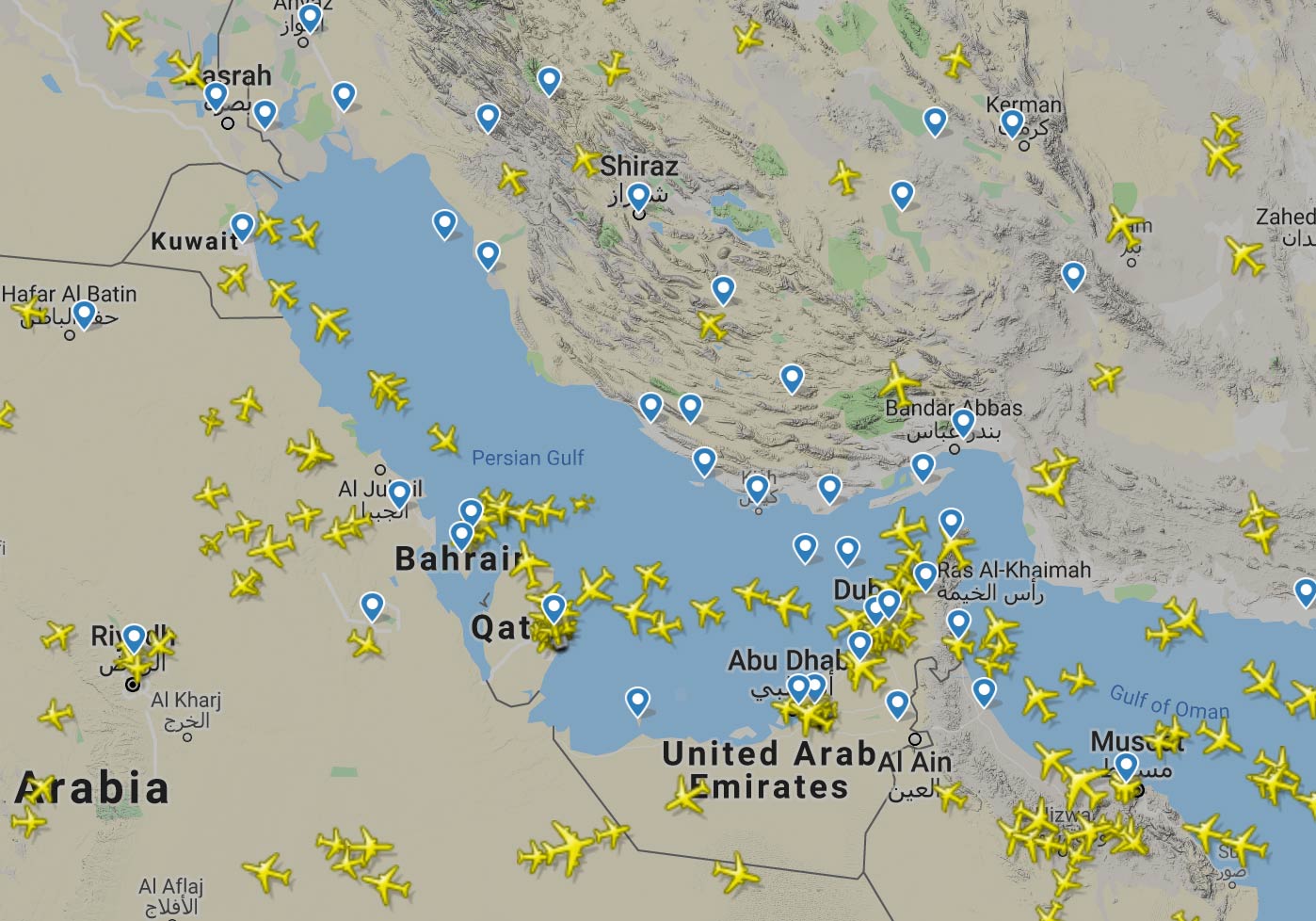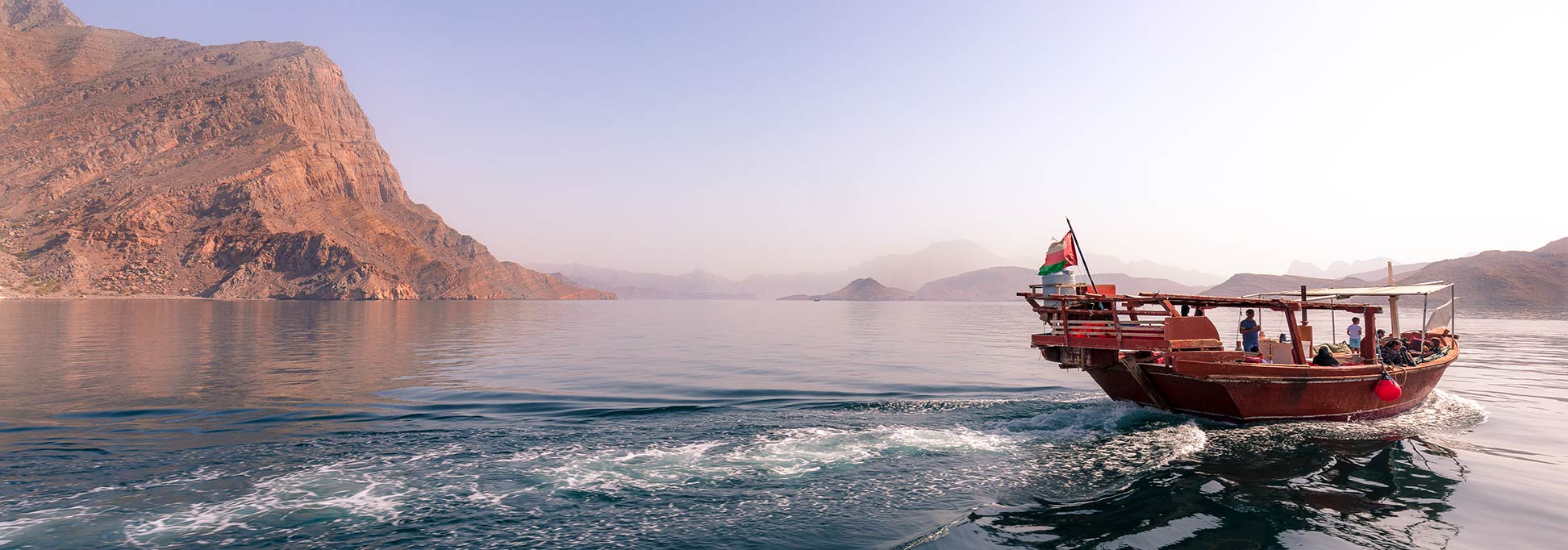About the Persian Gulf
The Persian Gulf is an arm of the Arabian Sea between the mountainous coast of southwestern Iran and the rather flat coast of
Arabian Peninsula. The gulf is approximately 1000 km long and 200 to 300 km wide, with an area of about 250,000 km². The inland sea is connected to the Gulf of Oman in the east by the Strait of Hormuz.
Persian Gulf Countries
Eight countries border the Persian Gulf,
Iraq,
Kuwait,
Saudi Arabia,
Bahrain,
Qatar,
United Arab Emirates,
Oman (Musandam exclave) and
Iran.
The gulf is fed by the Shatt al-Arab in the northwest, a major river formed by the confluence of the Euphrates and the Tigris. Some minor Iranian rivers such as the Mond River, the Zohreh and the Helleh River, also empty into the Persian Gulf.
The Persian Gulf is an important transportation route since antiquity and therefore a contested region. Arabs, Persians, Turks, the Portuguese and later the British fought to control of the sea. Before oil was discovered in the gulf in 1908, people made their living from fishing, pearl diving, trade, and piracy.
Oil production in the Persian Gulf on industrial-scale began only in the 1930s. Today the Arab states of the Persian Gulf provide approximately 20% of the world oil production.
Strait of Hormuz
The Strait of Hormuz is situated between Qeshm Island and the Iranian coast in the north and the Musandam Peninsula of the Arabian Peninsula in the south. The strait is recognized as an international trade route. It links the Persian Gulf with the Gulf of Oman.
The waterway is of strategic and economic significance, all ocean transport to and from the oil-rich countries must pass through the strait. About one-fifth of the world's seaborne oil is transported via the Strait of Hormuz.
More about Persian Gulf
 The airspace in the Persian Gulf is also quite busy - and a contentious issue.
The airspace in the Persian Gulf is also quite busy - and a contentious issue.
Image: flightradar24.com
There are three major international airports in the Gulf Region, Dubai International Airport in
Dubai and Abu Dhabi International Airport in
Abu Dhabi in the UAE, and Hamad International Airport in
Doha in Qatar.
Other international airports are in
Kuwait City, Dammam,
Muscat, and
Manama.
Major Ports in the Persian Gulf
There are a number of ports in the Persian Gulf and numerous tanker terminals along the coast and offshore.
The largest ports in the Persian Gulf region.
The Port of Basra and the offshore Al Başrah Oil Terminal in
Iraq.
Kuwait's major ports are Shuwaikh Port in Kuwait City, and the Port of Shuaiba (container). There are several tanker terminals along Kuwait's coast.
Saudi Arabia
There are two major ports in Tarout Bay; King Abdulaziz Seaport of Dammam, the largest port in the Persian Gulf, and the port of Ras Tanura. Dhahran and Khobar are old Saudi port cities. King Fahd Industrial Port is a large industrial port in Jubail; the former fishing village is now known as Jubail Industrial City, one of the world's largest industrial cities and a major civil engineering project.
Bahrain
Mina Salman, south of Manama, is the primary cargo port of Bahrain.
Qatar
Hamad Port south of Doha is Qatar's main seaport.
Iran
Major port cities on the
Persian Gulf are Bandar-e Mahshahr, Bushehr, Bandar Lengeh, and Bandar Abbas.
United Arab Emirates
Jebel Ali is the largest human-made harbor and the busiest port in the Middle-East. Other ports are Mina Rashid in Dubai, Mina Khalid and Khor Fakkan in Sharjah, Das Island, an offshore island and part of Abu Dhabi, and Mina Zayed, a commercial deep-water port that serves Abu Dhabi.



